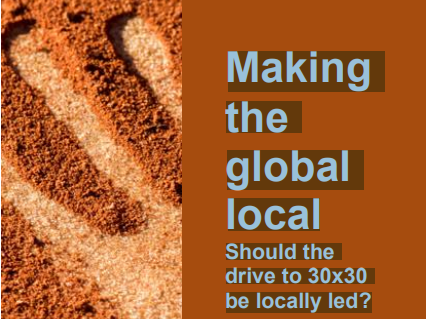
There has been a profound shift in attitudes towards the designation and management of site-based conservation over the past 25 years, from being a predominantly science-based, top-down and government-led approach to one that focuses on governance and equity, and is far more variable, bottom-up and locally led.
This short research report outlines the shift towards locally led conservation (section 1), looks at the evidence base for successful implementation of the approach from peer-reviewed literature (section 2); and then draws out lessons learned on what makes locally led approaches succeed in the long term (section 3). A review is made of assessment and reporting on the success of locally led approaches (section 4). The report ends with recommendations and a policy call to the upcoming Convention on Biological Diversity (CBD) Conference of the Parties (COP) to ensure locally led approaches are central to the implementation of its conservation targets (section 5).
This call acknowledges that the CBD’s Kunming-Montreal Global Biodiversity Framework (GBF) can accelerate the move to local leadership in conservation, linked to its goals related to increased equity, localisation and a focus on human rights. All major conservation NGOs and multilateral institutions accept and are actively working with local people and organisations to support the GBF, which includes its Target 3, a call to increase protection to 30% of land and sea by 2030 (from the current 17.5% of terrestrial areas and nearly 8.5% of marine areas).












